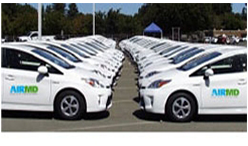
Leed Testing in Charleston
Click to view our educational video presentation
The Leadership in Energy and Environmental Design (LEED) certification program is created by the United States Green Building Council’s (USGBC) and provides a framework for healthy, efficient, carbon and cost-saving green buildings. To achieve LEED certification, a project earns points by adhering to prerequisites and credits that address carbon, energy, water, waste, transportation, materials, health and indoor environmental quality. Ambient air sampling as part of the indoor environmental quality credit is a quick way to achieve points in the goal of obtaining LEED certification.
AirMD’s qualified consultants assist with the development of sampling plans and collection of ambient air samples to assess whether the building meets the published standards for the indoor air quality parameters outlined in the LEED standards. The parameters include:
| Particulates (PM10) | Ozone |
| Particulates (PM2.5) | Carbon monoxide |
| Formaldehyde | Target volatile organic compounds |
| Total volatile organic compounds |
Upon completion of the site assessment and air sampling, a complete detailed technical report is issued explaining the sampling plan developed, sampling methodologies utilized, the laboratory analysis completed, laboratory results and a conclusion whether the air quality was within the maximum allowable concentrations documented in the LEED standards.
AirMD can serve your environmental testing needs including: Mold testing and mold inspection, asbestos, allergy and dust mite testing, bacteria, chemical and VOC testing, lead, heavy metal, formaldehyde, pesticide and water testing.









